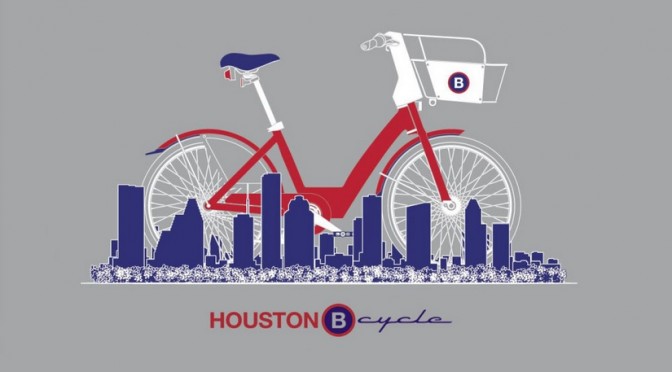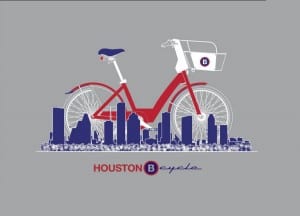Just 5 years ago, the thought of a city like car-centric Houston having a bike sharing program was still something of a fantasy. Even those working to start such an endeavor were unsure whether or not it would catch on.
But since it’s commencement in 2012, Houston B-Cycle has grown at a consistently higher rate than anyone could have expected. And would you believe that some of the highest months of ridership are in the midst of the area’s most oppressive heat?
With these facts in mind, the program has announced plans for a big expansion.
Here’s the info, via City press release…
Houston’s Bike Share Program is growing!
Today, the Houston-Galveston Area Council Transportation Policy Council (H-GAC TPC) approved $3.484 million of Transportation Improvement Program (TIP) dollars to expand bike sharing in Houston. The funding will enable the bike share program to increase three fold over the next 18 to 24 months, expanding from 29 stations to 100 stations and nearly 800 bikes when the phases are completed. The program will stretch from south of the Texas Medical Center to the north up into the Heights and from the west to Memorial Park to the Greater East End.
“Following on the heels of our METRORail expansion and METRO’s New Bus Network launch, this is a great day for transportation in Houston. Bike Share is an extremely successful and sustainable transportation initiative, and with the support of our regional and federal partners, we are able to expand the system into a large and thriving bike network, providing a real commuter and recreational transportation option for workers, residents and visitors while also improving health and quality of life,” said Mayor Annise Parker.
The expansion will be divided into three phases, with community input. The first phase will populate the Texas Medical Center, Rice University and Rice Village. Phase II will focus on creating greater station density; primarily in the Museum District, Midtown, Montrose and Downtown. Phase III will broaden the footprint into the East Side, SE around Texas Southern University and University of Houston Main campus, up into the Heights and west of Downtown.
The expansion will also create the largest bike share program in Texas and the Southwest.
Students at the University of Houston and Texas Southern University have been eyeing the B-Cycle program for a while. For those that live on campus without a car, it will make for much-improved trips to places like the closest grocery stores and pharmacies to those campuses. The only question so far would seem to be around the station densification plans for places like Montrose and Downtown. As a casual observer, it seems that after Phase I, the most logical route would actually be to implement Phase III before working to fill in the already established areas. But that assumption is made without looking at the proper data of which stations are most heavily-used.
In any event, this is great news for Houston’s growing bike culture, and overall transportation needs. Let’s hope they can continue the expansion effort and bring all the benefits of bike sharing to places outside the loop as well. The Energy Corridor, with rapid trail expansion and it’s new Portsmouth Street Woonerf, is ready to go.
Have you tried B-Cycle? What are your thoughts on the expansion plans? Leave them below in the comments.


80% of those who ride bikes in Houston are minority group members riding their own bikes to work, because they either do not have public transportation that easily gets them there, or DO NOT OWN cars. B-cycle is used to go to lunch, to a park, to shop, etc by those who live in some of the wealthiest areas of Houston. Most probably a recent model car, and are not B-cycling to work.
Yes, it saves a little air pollution, but in a city with the great inequality that Houston has, the B-Cycle money would be much better spent on improving public transportation rather than providing a middle class/upper class individual a ride to the library in the middle of the afternoon.